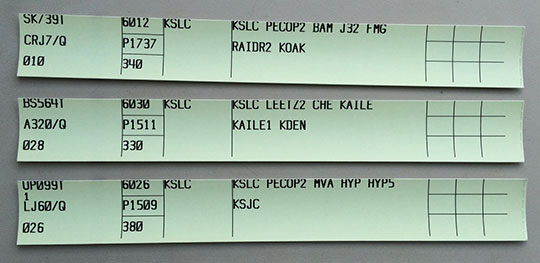Status and Timeline for TFDM
Status
The FAA laid the groundwork for TFDM with concept development and human-in-the-loop testing, and by conducting an extensive investment analysis that included a market survey and 2014 Technical Industry Forum.
The FAA's Joint Resources Council approved the initial scope, goals, and schedule of the TFDM program in 2012 and made the initial investment decision in March, 2014. The Screening Information Request (SIR) was released March, 2015. Vendor selection and a Final Investment Decision was made in June, 2016.
Timeline
| Activity | Date |
|---|---|
| Request for Information #1 | 12/2011 |
| Request for Information #2 | 4/2013 |
| Request for Information #3 | 4/2014 |
| Draft SIR Release | 4/2015 |
| Proposals Due from Industry | 7/2015 |
| FAA Final Investment Decision and TFDM Contract Award | 6/2016 |
| System Development | 6/2016 to 2021 |
| Implementation | 2020 to 2028 |
Traffic Prediction Current State
At most airports, paper flight strips are being used to monitor and share flight plans, requiring controllers to handle and communicate safety-critical data manually.

Traffic predictions and decisions are tied to flight plan data that is difficult to update and to share between stakeholders. Flight plans are used to estimate arrivals, gate push-backs, routings, and departures. Their use in the tactical decisions made in handling the more than 40,000 flights daily can lead to inefficiencies across the national airspace system.
In addition, aircraft operators currently board passengers and push back from the gates before flights are given slots in line for departure. This can lead to tarmac congestion and wasted fuel with aircraft idling as they wait to join the departure queue.
